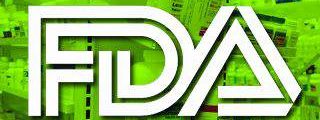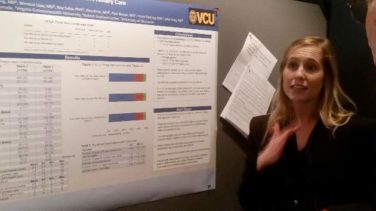Alternative therapies, from vitamins and supplements to meditation and acupuncture, have become increasingly popular treatments in the United States for many medical problems in the past few decades. In 2008, the National Institutes of Health reported that nearly 40% of adults and 12% of children had used “complementary or alternative medicine” (CAM) in the preceding year. Other surveys have suggested that closer to 30% of general pediatric patients and as many as 75% of adolescent patients have used CAM at least once. These treatments are especially popular for chronic conditions that are managed but not usually cured with current evidence-based treatments. Psychiatric conditions in childhood sometimes have a long course, and have effective but controversial treatments, as with stimulants for ADHD. Parents sometimes feel guilty about their child’s problem and want to use “natural” methods or deny the accepted understanding of their child’s illness. So it is not surprising that families may investigate alternative treatments, and such treatments have multiplied.
While there is evidence that parents and patients rarely discuss these treatments with their physicians, it is critical that you know what therapies your patients are using. The limited evidence, the potential impact of placebo effects, and the passion of parental beliefs can make alternative therapies a difficult area of practice. You should focus on tolerance in the context of protecting the child from harm and improving the child’s functioning. If you have ever recommended chicken soup for a cold, then you have prescribed complementary medicine, so it is not a stretch for you to offer some input about the other alternative therapies your patients may be considering.
The first step in helping families make smart choices about alternative therapies is to ask about them in a nonjudgmental way. “Have you found any remedies or strategies that have been helpful in managing … ?” If you strike a posture that is genuinely curious and humble, it will be easier for your patients to consider your input. With adolescent patients, you should ask them without their parents present about supplements and alternative treatments (especially as many teenagers think of marijuana as “medicine”). If you aren’t familiar with what your patients describe (Ayurveda?), let them teach you and then do some research yourself.
It is important to note that rigorous, case-controlled studies of efficacy of most alternative therapies are few in number and usually small in size (so any evidence of efficacy is weaker), and that the products themselves are not regulated by the Food and Drug Administration or other public body. This means that the family (and you) will have to do some homework to ensure that the therapy they purchase comes from a reputable source and is what it purports to be.
Many of the alternative therapies patients are investigating will be herbs or supplements. Omega-3 fatty acids are critical to multiple essential body functions, and are taken in primarily via certain foods, primarily fish and certain seeds and nuts. A deficiency in certain omega-3 fatty acids can cause problems in infant neurological development and put one at risk for heart disease, rheumatologic illness, and depression. Supplementation with Omega-3 fatty acids (eicosapentaenoic acid [EPA] and docosahexaenoic acid [DHA], specifically) has a solid evidence base as an effective adjunctive treatment for depression and bipolar disorder in adults. In addition, randomized, placebo-controlled, double-blind studies have demonstrated efficacy in treatment of children with mild to moderate ADHD at doses of 1,200 mg/day. There are some studies that have demonstrated improvement in hyperactivity in children with autism with supplementation at similar doses. These supplements have very low risk of side effects. They are a reasonable recommendation to your patients whose children have mild to moderate ADHD, and they want to manage it without stimulants.
Another alternative first-line psychiatric treatment patients may ask about is St. John’s Wort. Studies have demonstrated its moderate efficacy in the treatment of mild depression, but not in adolescents. It is worth noting that this supplement also has demonstrated potentially serious interactions with other medicines, including raising the risk of serotonin syndrome when combined with SSRIs and decreasing the efficacy of birth control. Another supplement, SAM-e (s-adenosyl-l-methionine), has demonstrated modest efficacy in small open-label studies in the treatment of depression, and has fewer side effects than St. John’s Wort. But its efficacy is not as robust as traditional antidepressants. N-acetyl cysteine, a protein that people usually get from their diets, is the treatment for acetaminophen overdose and carbon monoxide poisoning, and has been used in the treatment of amyotrophic lateral sclerosis and Alzheimer’s disease. There is growing evidence of its efficacy as a treatment for trichotillomania, compulsive nail biting, and compulsive skin picking, often associated with severe anxiety disorders such as obsessive compulsive disorder. It also has demonstrated efficacy as part of treatment for marijuana dependence, alongside behavioral therapy. Myoinositol, a sugar alcohol which can be produced by the body and is found in many foods, has been used at higher doses as a supplement in children and adolescents with bipolar disorder, as an adjunct to treatment with some promising results. When families are considering adding one of these supplements to improve the efficacy of treatment of a complex psychiatric illness, you should feel comfortable referring their questions to their psychiatrist.
Families also may be considering physical or mechanical treatments. Acupuncture has demonstrated efficacy in the treatment of fatigue and pain, migraines, and addiction, although there are very few studies in children and adolescents. There is some evidence for its efficacy in treatment of mild to moderate depression and anxiety in adults, but again no research has been done in youth. Hypnotherapy has shown modest efficacy in treatment of anticipatory anxiety symptoms, headache, chronic pain, nausea and vomiting, migraines, hair-pulling and skin picking as well as compulsive eating and smoking cessation in adults. There is some clinical evidence for its efficacy in children and adolescents, and its safety is well established. Massage therapy has shown value in improving mood and behavior in children with ADHD, but not efficacy as a first-line treatment for ADHD symptoms. Chiropractic care, which is among the most commonly used alternative therapies, claims to be effective for the treatment of anxiety, depression, ADHD, behavioral problems of autism and even schizophrenia and bipolar disorder, but there is no significant scientific evidence to support these claims. And neurofeedback, which is a variant of biofeedback in which patients practice calming themselves or improving focus while watching an EEG has shown modest efficacy in the treatment of ADHD in children in early studies. It is worth noting that all of these therapies may be costly and not covered by insurance.
Perhaps the easiest alternative therapies to recommend are those with the lowest risk and lowest cost, which patients themselves learn to do and which have other health benefits. Exercise has a growing body of evidence for its concrete health benefits. Moderate exercise three times weekly has been shown to be as effective in treating mild to moderate depression in adults as SSRIs, and several smaller studies have demonstrated similar efficacy in adolescents with depression. In addition, exercise improves the quality and quantity of sleep and improves symptoms of anxiety. Along a similar vein, developing a regular meditation practice appears to improve the symptoms of multiple psychiatric conditions. One meta-analysis demonstrated that meditation had the same effect size for both anxiety disorders and depression in both adults and adolescents as antidepressants have. Studies of meditation also have shown promise in treating addiction and in improving measures of attention and concentration. Both exercise and meditation appear to improve health overall, are inexpensive, and have few if any negative side effects. Of course, helping a depressed patient find the motivation to begin and sustain a new practice is the main challenge. But if a family is considering alternative therapies that may be more passive, costly, and of uncertain benefit, it can be a wonderful opportunity to point out the effective, inexpensive alternative therapies immediately at their disposal.
Additional readings
1. Child Adolesc Psychiatr Clin N Am. 2013 Jul;22(3):375-80 .
2. J Am Acad Child Adolesc Psychiatry. 2008;47(4):364-8 .
3. J Am Acad Child Adolesc Psychiatry. 2011;50(10):991-1000 .
4. J Am Acad Child Adolesc Psychiatry. 2014 Jun; 53(6):658-66 .
5. J Am Acad Child Adolesc Psychiatry. 2016 Oct;55(10):S168-9 .
Dr. Swick is an attending psychiatrist in the division of child psychiatry at Massachusetts General Hospital, Boston, and director of the Parenting at a Challenging Time (PACT) Program at the Vernon Cancer Center at Newton Wellesley Hospital, also in Boston. Dr. Jellinek is professor emeritus of psychiatry and pediatrics, Harvard Medical School, Boston. Email them at pdnews@frontlinemedcom.com .





